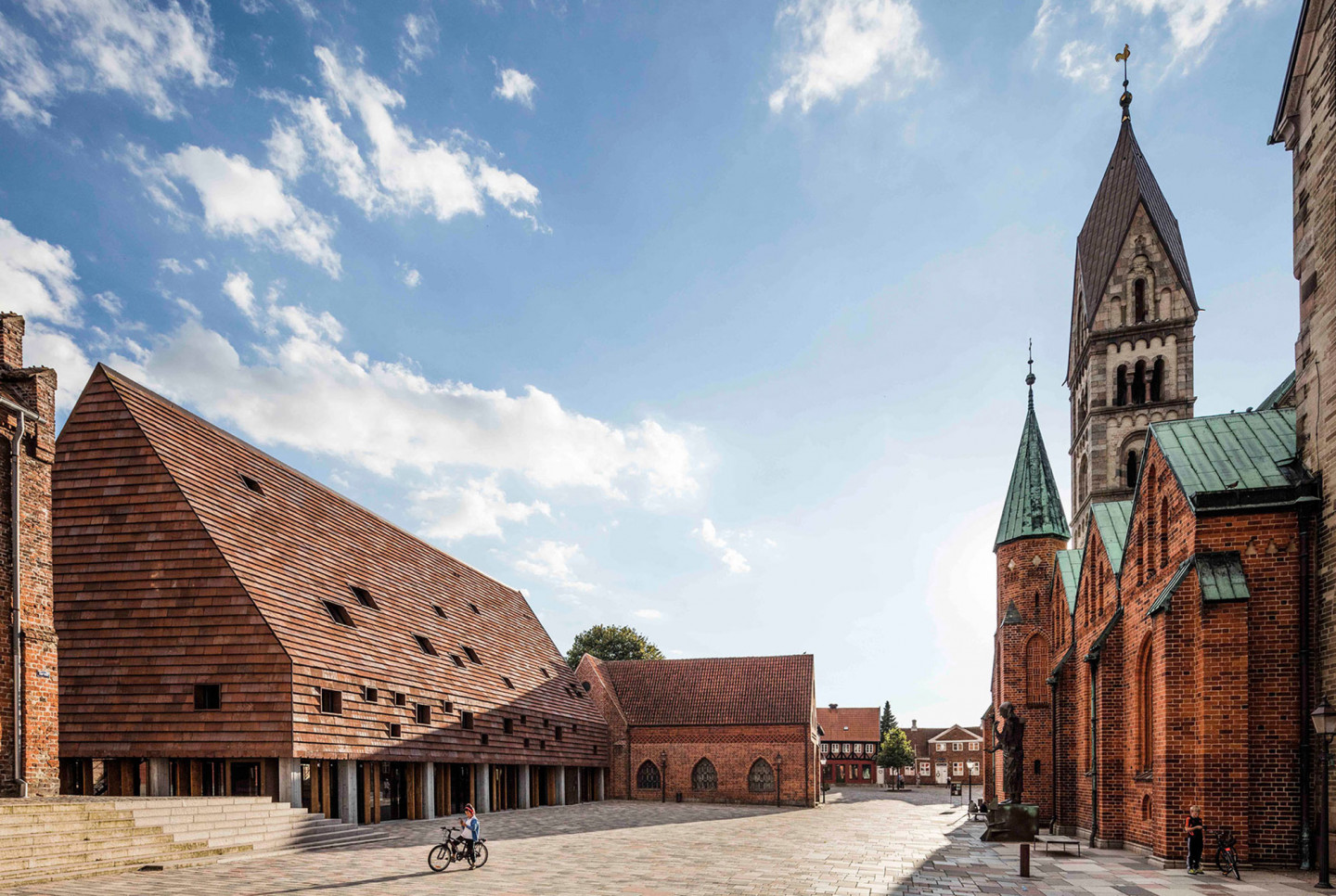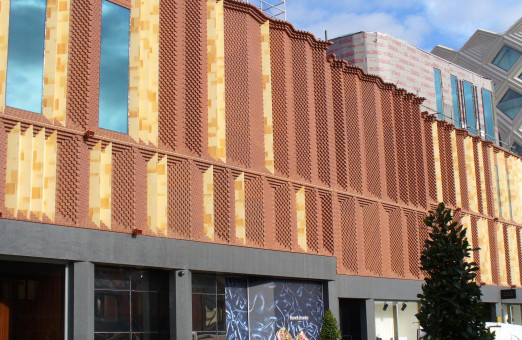Kannikegården is in Ribe, Denmark’s best preserved medieval city, located on the main square, just across the city cathedral. The simple brick clad volume hovers above the city floor to expose an open ground floor with a 1000-year-old brick ruin integrated within. The ruin as well as the modern cladding convey stories of cultural and historical heritage.
The building houses functions for the parochial church council and the staff at the church. At the same time, it functions as a hospitable setting for public events for the town’s citizens, such as talks, concerts and film screenings.
The project task was faced with a special challenge: Ancient discoveries, telling us about Danish history over the past thousand years, have been found on the building site. The archaeological excavations have uncovered remains of Denmark’s oldest christian cemetery from 800 A.D., originating from the transition period from the Viking to the Christian ages. Most visible however, is a listed brick ruin from the Augustine Canon’s monastery dating back to the 1100s. The ruin is integrated into an exhibition space designed to communicate the many cultural historic layers of the location.
The building consists of a single, oblong volume with a pitched roof, supported by pillars above the preserved archaeological findings. The length of the building is located along the square with a scale and roof pitch following the neighbouring buildings on the square, thus adapting to the surrounding city scale. The archetypical shape of the volume is given a sculptural crookedness towards the south, to bring more light and air towards the neighbour buildings behind. Here, an intimate green courtyard is established along the streets Sønderportsgade and Rykind.
The project draws several threads to the place of cultural and historical heritage, where the past meets the present. It is an interesting symbolic point that the brick ruin, by virtue of its original function as a refectory of the ancient monastery, is a distant ancestor of the new building. It's also interesting that the brick ruin and the new building Kannikegården tell a story of the use of masonry through a period of 1000 years. The Danish Culture Agency considers the ruin to be the best-preserved building fragment among the oldest brick-stone buildings, and is therefore regarded as a protected monument.
Credits
Client: Ribe Domsogns menighedsråd
Client advisor: Arkitektfirmaet Kim Christiansen
Financial support for landscape project: Realdania
Archaeology: Sydvestjyske Museer
Architect / Lead consultant: Lundgaard & Tranberg Arkitekter
Landscape architect: Schønherr A/S
Structural engineer and construction manager: Oesten ingeniører og arkitekter Aps
M&E and electrical engineer: Esbensen Rådgivende Ingeniører A/
Main contractor: Jorton A/S
Gross floor area
Kannikegården total 1079 m2, including 270 m2 non-heated space under building for ruin and 809 m2 Parish Centre. Site area 624 m2
Time schedule
Competition fall 2012
Ground-breaking June 2014
Completion December 2015


